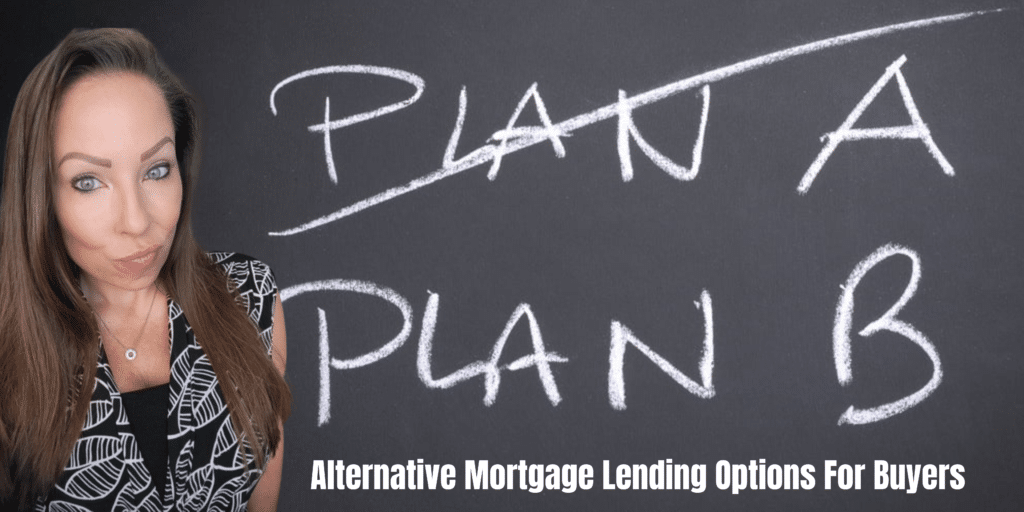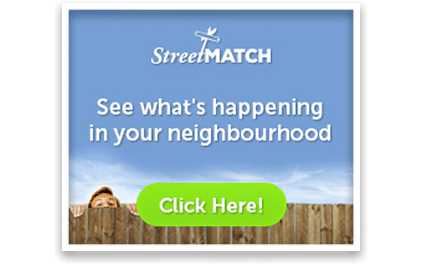
Alternative lending for home buyers may become more and more prevalent as interest rates continue to rise.
When it comes to buying a home in Canada, there are a variety of mortgage products available to help individuals and families secure financing. While traditional mortgages are still the most common type of loan used for home purchases, there are also alternative mortgage lending products available that may be a better fit for some home buyers.
One alternative mortgage lending product is the adjustable-rate mortgage (ARM). With an ARM, the interest rate on the loan is not fixed, but instead can fluctuate over time based on market conditions. This type of alternative mortgage lending product may be a good option for home buyers who expect their income to increase in the future, as a lower interest rate can result in lower monthly payments. However, it is important to note that the interest rate on an ARM can also increase, which could result in higher monthly payments.
Another alternative mortgage lending product is the interest-only mortgage. With this type of loan, the borrower only pays the interest on the loan for a certain period of time, typically 5-10 years. After this period, the borrower begins to pay both the interest and the principal on the loan. This type of mortgage may be a good option for home buyers who expect their income to increase in the future, as it allows them to keep their monthly payments low in the short term. However, it is important to note that the total interest paid over the life of the loan may be higher with an interest-only mortgage.
For home buyers who may have trouble qualifying for a traditional mortgage, a government-insured mortgage may be a good option. These alternative mortgage lending products are backed by the Canadian Mortgage and Housing Corporation (CMHC) or the Genworth Canada, and may have more lenient qualifying criteria. However, it is important to note that these mortgages often require a higher down payment and may have higher interest rates than traditional mortgages.
Another alternative mortgage lending product is a shared equity mortgage. This is a type of mortgage where the lender shares in the appreciation of the home’s value in exchange for a lower mortgage rate. This is a relatively new alternative mortgage lending product in Canada, and it’s a good option for home buyers who may not qualify for a traditional mortgage or who are looking for a lower interest rate.
Lastly, a lender or bank may offer a line of credit or a personal loan to be used towards a down payment for a home. This can be a good option for home buyers who may not have a large amount of cash saved up for a down payment, but it’s important to be aware of the terms and interest rates of these products.
It is important to note that while alternative mortgage lending products may offer benefits such as lower monthly payments or more lenient qualifying criteria, they may also come with risks and drawbacks. Home buyers should carefully consider their financial situation and long-term goals before choosing an alternative mortgage product. It is highly recommended to consult with a mortgage professional or a financial advisor before making any decisions.
Overall, there are a variety of alternative mortgage products available to home buyers in Canada, each with its own set of pros and cons. By carefully considering their financial situation and long-term goals, home buyers can choose the mortgage product that is best suited to their needs.
BREAKING DOWN ALTERNATIVE MORTGAGE LENDING PRODUCTS EVEN FURTHER
If you’re looking to buy a new home, chances are you’ll need a mortgage to finance the purchase. If your personal situation doesn’t fit into the mold and tight requirements that the traditional big banks want to see, then you can find yourself in what is commonly referred to as an “Alternative-A” or “B” alternative mortgage lending space.
What does this mean exactly? These alternative mortgage lending institutions typically come in one of the following three classifications:
ALT A LENDERS
These alternative mortgage lenders typically include banks, trust companies and monoline lenders. These are large institutional lenders that are regulated both the provincial and federal government, but also have a range of products that ay work for consumers requiring a broader set of qualifying criteria in order to obtain a mortgage.
MORTGAGE INVESTMENT COMPANIES (MIC’s)
MIC’s are much like your Alt A Lender in the sense that they are set up and organized according to the Income Tax Act with an incorporated lending company consisting of a group of individual shareholder investors that pool money together to lend out on mortgages. These lenders follow individual qualifying lending criteria but tend to operate with an even broader qualifying regime.
PRIVATE LENDING
Private lenders are becoming extremely common as borrowing money becomes more complicated. Private lenders are generally individual investors or companies who will lend their own money to mortgages that can potentially carry a higher risk of default relative to the borrower’s circumstances. This category of lenders are typically not regulated and will cater to those with a higher risk profile – in exchange for a higher rate of interest on the funds being loaned.
All of the classifications of alternative mortgage lenders noted above will price their interest according to the perceived risk of the borrower. The broader the guidelines are for a particular mortgage contract, the more risk the lender ultimately assumes. This will result a higher cost to the borrower by way of the interest rate.
Now, before you consider an alternative mortgage lending product, you should start by asking yourself:
1. What is keeping me from qualifying for a traditional “A” mortgage at the moment?
2. How long will it realistically take me to correct the issue and qualify for a traditional lender mortgage?
3. How do I improve my credit situation or score?
4. How much do I currently have available as a down payment?
5. Am I willing to wait until I can qualify for a regular mortgage, or do I want/need to get into a certain home today?
6. Is this mortgage sustainable? Can I afford the larger interest rate?
7. Can I exit this lender down the road in the event the lender does not renew or I cannot afford this alternative mortgage lending option much longer?
If you are someone ready to go ahead with an alternative mortgage lending product because of a poor credit score, or you don’t want to wait until you’re able to qualify with a traditional lender, here are some additional questions to ask when reviewing an alternative mortgage product:
1. How high is the interest rate? What are the fees involved and are these fees paid from the proceeds, added to the balance or paid out of pocket
2. What is the penalty for a missed mortgage payment? How are they calculated? And what is the cost to get out of the mortgage altogether?
3. Is there a prepayment privilege? For example, are you able to avoid penalties if you give the lender a higher mortgage payment once a month?
4. What is the cost of each monthly mortgage payment?
5. What happens at the end of the term. Is a renewal an option and what are the costs to renew if applicable
6. What is included in the fine print?
When it comes to alternative mortgage lending products, things can get complex. It’s a good idea to speak directly to a mortgage broker to get a clear understanding of the best options available to suit your personal circumstances.
WHAT’S HAPPENING IN THE ECONOMY?
What a year 2022 has been. In the face of red-hot inflation, the Bank of Canada raised its policy rate by a whopping 400 basis points to 4.25%. This initially began to cool inflation and the red hot housing market that was on a steady upwards trajectory throughout the pandemic. As rates have risen, plenty of buyers decided to move to the sidelines as their dreams of home ownership were not an affordable reality anymore.
Throughout the year, home prices started to fall, especially in the GTA and in Vancouver. The economy is slowing down, but it still has a ways to go according to the Bank of Canada. Inflation has dropped from 8.1% at the beginning of 2022 to 6.8% now. Core inflation is sticky however and wages have been rising rapidly. The Bank of Canada has a goal to bring inflation back down to the 2-3% (ideally 2%) level, even if the collateral damage is a recession.
As 2023 continues, there is a general expectation in the industry that there will be at least one more rate hike, then a pause, to see if the changes have been having the desired impact on inflation. It’s highly unlikely that the Bank of Canada will cut the policy rate at all this year.
A mild recession may ensue, causing home prices to fall a bit further. By next year, our economy can expect to recover and buyers/sellers who are in the housing market will start re-engaging more actively. Experts don’t think inflation will fall back below 2% and interest rates won’t return to the pre-pandemic glory days, at least not for a long time.
The Canadian economy is extremely “interest sensitive” right now. Debt and it’s costs to service it are at record levels. Many people will really feel their purse strings pulled when their mortgages are up for renewal in the coming year(s). The unsustainable housing costs we experienced during the pandemic will not return for some time, but the fundamental value of homes will remain strong as the population in Canada is strained by the rapid influx of immigrants moving here from other countries.
If you’re looking to buy, sell or invest, let’s talk! I can be reached at 647-896-6584 or by email at info@serenaholmesrealtor.com. For more about me and how I operate, click here.
There is also plenty of great content for home buyers on social and over on my YouTube page.










